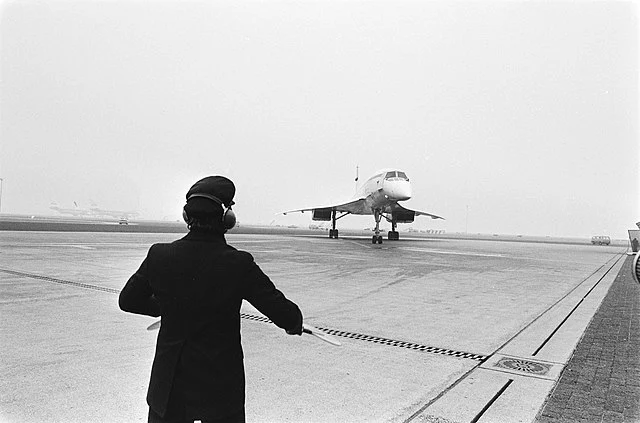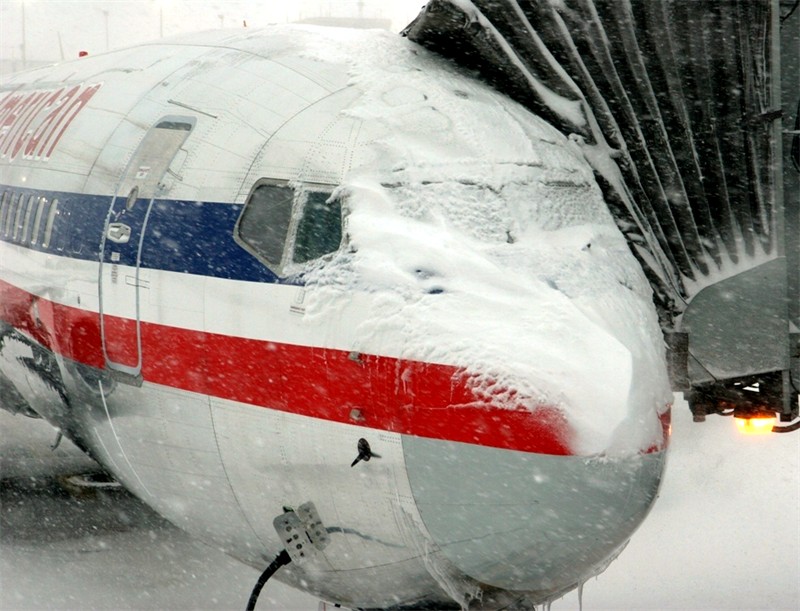Airport Marshal - Role, Training and Skill Set
An Airport Marshaller is a member of the Ground support team. He, She or they are rarely a person dedicated solely to the parking duties. There are there providing many services provided by Ground Handlers such as Cabin services when the plane lands, Catering services or Passenger services and Ramp services. Many of these staff get marshalling training along with a myriad of other training courses related to safety and security associated with working on and close to commercial aircraft.
Now, if you arrived here and just want to know what those signals are, then we want to give you that right away. Below is a great quick explanation by Travis at Air Zoo, a Smithsonian related Air Museum. Support your Air and Space Museums folks!
Signals

Airport Marshalling - Who does it?
Prior to an aircraft arrival, the signaler shall ensure that the gate and area within which an aircraft is to be guided is clear of objects, which the aircraft might otherwise strike. This is necessary due to the fact that the design of commercial aircraft is such that the path of the wing tips, engines and other extremities cannot always be monitored visually from the flight deck while the aircraft is being maneuvered on the ground.
In addition to the signaler it is also common for other staff to follow the aircraft into the parking gate or from one gate to another while walking astride the aircraft. These are Wingwalkers and they are there to ensure the wingtips don’t strike vehicles, poles or other parked aircraft.
So who attends Marshaller training ?
According to IATA:
Airside traffic personnel
Aircraft ground dispatchers
Ramp services personnel
Catering airside delivery personnel
Role of Ground Marshaller
The role is to ensure the safe and efficient movement of aircraft on the ground. This includes guiding aircraft in and out of parking bays, providing visual signals to pilots (and Radio contact where possible), ensuring that traffic on the apron is clear, and coordinating with other ground personnel. Marshals must be knowledgeable about aircraft dimensions, airport layout and regulations, airside safety procedures, and communication protocols.
Marshals also coordinate with other ground personnel to ensure that services such as catering, fuel delivery, baggage handling and cleaning operations are carried out safely and efficiently. They communicate with pilots via radio to confirm instructions and ensure they understand any changes in the flight plan or other operational details.

On Gate Collisions
An airport ramp is an intricate interplay between the aircraft and the ground equipment that service passengers and the aircraft itself. Where access interfaces must be managed and separation between aircraft and vehicular traffic must be maintained and optimized. While most incidents that happen on airport aprons and taxiways do not result in a loss of life, they frequently cause aircraft damage, cause delays for passengers, and result in significant financial losses. But sometimes they can be deadly.
The collisions that occur as airplanes are on, approaching, or leaving their designated gate are dangerous mostly to those on the ground.
Aircraft Marshalling Training
IATA have both training and the associated Airport Handling Manuals necessary for the regulated training. They also have a good e-learning course on Air Marshalling. But before you head over there and spend your money, just remember that this course (and the others required to work at airports will be provided to you when you start your employment, there is rarely any reason you should do this in advance by yourself. Also, airports are particular in their training, organization and regulations. So never do generic courses.
Upon completing the course you will have the skills to:
- Identify the importance of efficient communication between ground personnel and cockpit crew
- Repeat arm and hand signals during maneuvering of Ground Support Equipment (GSE) around the aircraft
- Translate key message into industry standard signals for safe and effective communications during aircraft movements at the ramp area

pilotinstitute
Are You Ready To Take Off?
Pass the FAA Private Pilot test with flying colors. Achieve your dreams of flying an airplane.
IATA Marshall
A Good Marshaller Course content will include:
- Marshaller hand signals for Aircraft & GSE (Ground Service Equipment)
- Aircraft movement hand signals for headset operators
- Aircraft movement hand signals for wingwalker, headset operator/tug driver
- Marshalling hand signals for aircraft
- Technical/servicing hand signals–ground staff to flight crew
- Technical/servicing hand signals–flight crew to ground staff
Signalers are responsible for issuing marshalling signals to aircraft in a clear and precise manner. ICAO Annex 2 (Rules of the Air) to the Convention on International Civil Aviation details the rules and objectives.
- All persons guiding aircraft will be trained, qualified and authorized by the FAA or an approved ATO (Air Training Organization) to carry out the functions of a signaler.
- Signalers must wear a Hi-Vis vests that allow the flight crew to identify that he or she (or they) are the persons responsible for marshalling.
- Fluorescent wands, Paddles or hands are used for all signaling by all ground staff at all times. Illuminated wands must be used at night or in low visibility.
Career Opportunities
As we mentioned, Airport Marshallers are double-jobbing at the airport given they have a primary role over the direction of aircraft. Below is a grid of airport roles and related salary and outlook information that can assist in your consideration.
| Role | Employer | Salary (p/a)* | Qualification | Attributes |
|---|---|---|---|---|
| Operations Manager | Industry Wide | $ 97,500 | Degree | Shift, Physical, Technical |
| Customer Services Rep | Airline | $ 39,000 | Higher Diploma, Experience | Shift, Confrontation resolution |
| Ticket Agent | Airline | $ 45,600 | Higher Diploma, College | Shift, Financial, organization |
| Baggage Handler | Airline | $ 30,000 | Higher Diploma | Shift, Physical, Noise, Cold, Heat |
| Cargo Agent | Airline, Freight Forwarder | $ 48,500 | Higher Diploma | Shift, Physical, Noise, Safety, Technical |
| Airport Manager | Airport, Airport Authority | $ 115,000 | Aviation Degree, Air Transport MBA | Management, Leadership, Organization |
| FBO Manager | Fixed Based Operators | $ 100,000 | Higher Diploma, Degree | Shift, Management, Organization, Regulatory |
| Station Manager | Airline | $ 79,000 | Higher Diploma | Shift, Physical, Leadership, Organization |
| Concession Staff | Retail Company | $ 30,000 | Higher Diploma | Shift, Financial, Management |
| Ramp Agent | Airline, Airport, FBO | $ 45,500 | Higher Diploma | Shift, Physical, Noise, Management, Cold/Heat |
| Air Traffic Controller | FAA, CAA, Military | $ 130,000 | Degree, Specialist Skills | Shift, Technical, Organization, Computational |
| Food Preparer/Chef | Airline, Catering Company, Airport | $ 59,500 | Diploma, Health Certificate | Shift, Culinary skills, H&S |
| Sky Cap | Airline | $ 45,000 | Higher Diploma | Shift, Customer Service, organization, |
*Salary is Median Range in US 2021 dollars according to the US Bureau of Labor statistics. This has been crossed referenced with five top G7 countries and found to be within 3-5%. For indicative purposes only.

TRAKRACER
Hone your aviation skills with these great flight simulator products from TrakRacer.
Get yourself in the sky today and feel what it’s like to be a pilot!
Future of Airport Marshalling

The key idea for the future of the ground handler industry is integrating the work of different stakeholders at an airport, including airlines, airports, air traffic controllers, government agencies, security agencies, and several ground handling companies, using blockchain technology.
The objective is to build a community ecosystem for airports, with all the stakeholders participating in an airport blockchain. The blockchain would include every stakeholder as a node and key holder. All operational requirements and servicing instructions are written to “the flight” which is viewed from the standpoint of flight operations. The block is updated with any changes to the flight. For this block, multi-signature rules can be set so that any advancement or modification to the flight is approved and recognized by stakeholders. What does this mean for Marshalling? Well it means that the management of aircraft is continuous and automated but there will always be a need to visually manage the operation. So even if the marshal role is taken over by the Visual Docking Guidance System there will always be a situational awareness requirement around every parking event.



